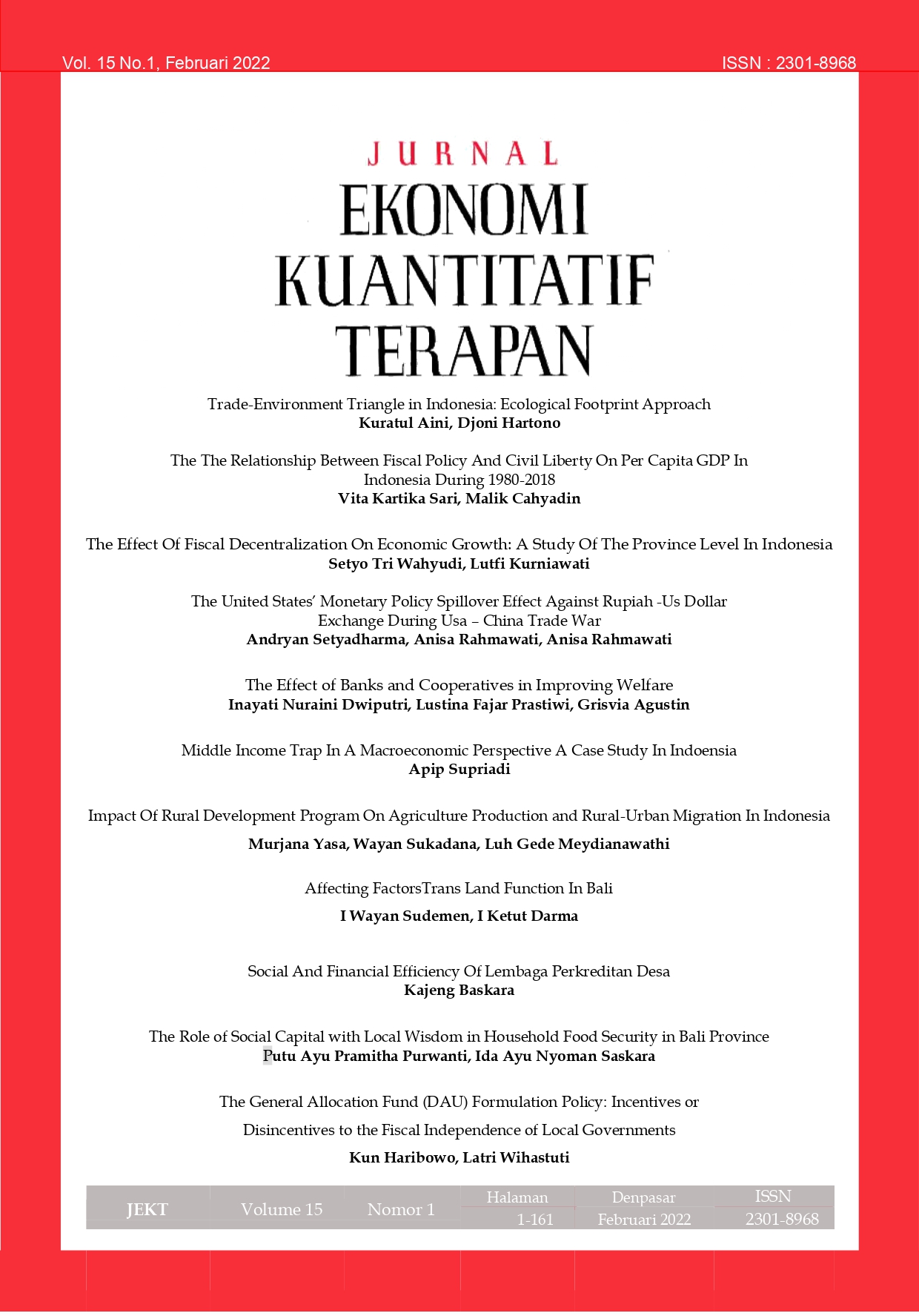Impact Of Rural Development Program On Agriculture Production and Rural-Urban Migration In Indonesia
Abstract
Indonesia is a very fertile agrarian country. Agriculture almost provides 40 per cent of jobs for the population. Ironically, agriculture is often identified with poverty. Farming is often engage with underemployment and become the last employment option for the job seeker. On the other hand, the ever-increasing numbers of Indonesian demand on food should be a potential market for the agricultural industry. However, domestic production and supply are often inadequate, forcing the government to import. The government is very vigorous in the construction of various infrastructure to support the development of agricultural field. Starting from the construction of supporting physical facilities such as irrigation to various training programs and capital. Therefore, this study will analyse the impact of various rural development programs that the Indonesian government has made on agricultural production in Indonesia. This study used two types of control variables to control the impact of the infrastructure development program. The first type is derived from the characteristics of farmers such as, various demographic characteristics and risk behaviour. Second is the control variable derived from the natural state such as geography and weather characteristics. The analysis used is panel data regression analysis on IFLS data. Based on the results of the analysis, we find that there is not enough solid evidence that various government programs are able to increase agricultural production. However, other results indicate that there is a tendency for people not to move to urban areas compared to before the program. This indicates a future opportunity to improve and resume various programs that have been implemented.
Downloads
References
Gertler, Paul J., Sebastian Martinez, Patrick Premand, Laura B. Rawlings, Christel M. J. Vermeersch (2011), Impact evaluation in practice, Washington DC: The World Bank
Khandker, Shahidur R. Gayatri B. Koolwal, and Hussain A. Samad (2010), Handbook on impact evaluation : quantitative methods and practices, Washington DC: The World Bank
Lewis, W.A. (1954), “Economic Development with Unlimited Supplies of Labor,” the Manchester School, Vol. 22, No.2, pp. 139-191.
Lewis, W.A. (1958), “Unlimited Labour: Further Notes”, the Manchester School,Vol. 26, No. 1, pp.1-32.
Lewis, W.A. (1979), “The Dual Economy Revisited,” the Manchester School, Vol. 47, No.3, pp. 211-229.
Lindauer, David L., Lant Pritchett, Dani Rodrik dan R. S. Eckaus (2002). What's the Big Idea? The Third Generation of Policies for Economic Growth. Economia. 3:1-39




















